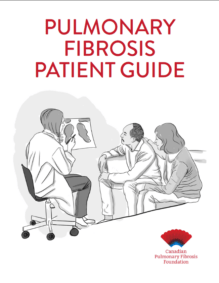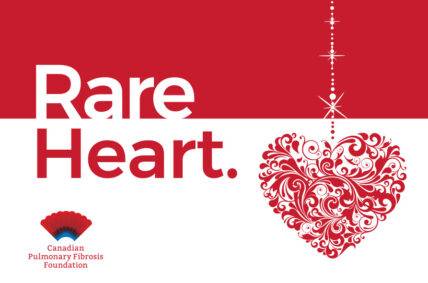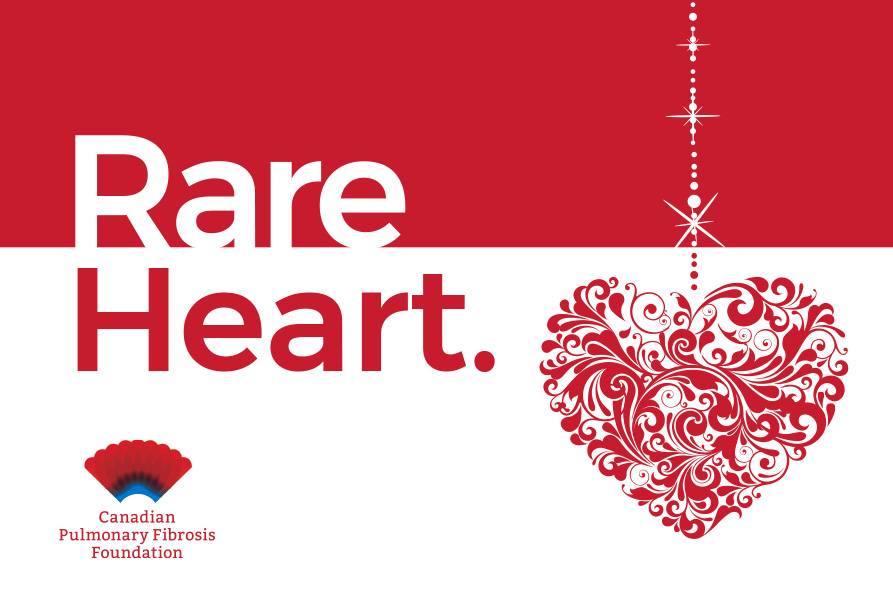Developing clarity in CT scan analysis for better PF diagnosis

We last spoke to Dr. Daniel Marinescu in June of 2021, when he was just completing the first year of a two-year CPFF Robert Davidson Fellowship at St. Paul’s Hospital in Vancouver. We were all in the midst of the pandemic and he had just completed 600 detailed BC patient profiles for the CARE-PF database, the Canadian Registry for Pulmonary Fibrosis.
He’s accomplished a great deal since then. He finished his CPFF Fellowship last June, completed his Master of Health Science degree, secured a position as a clinical assistant professor at the University of British Columbia (UBC), and spends about 25 per cent of his time caring for ILD patients at Vancouver General Hospital. He continues to conduct ILD research, having won a Michael Smith Health Research Trainee award to support his work as a post-doctoral fellow.
Dr. Marinescu’s first journal article coming out of his CPFF Fellowship work is titled: Integration and application of radiologic patterns from clinical practice guidelines on idiopathic pulmonary fibrosis and fibrotic hypersensitivity pneumonitis*. It has been submitted for publication and is undergoing review.
The study involved detailed assessment and quantification of computed tomography (CT) scans from 1,600 patients from the CARE-PF database. This included 800 records from within BC completed by Dr. Marinescu, as well another 800 cases reviewed by other ILD centres across the country collaborating on this project. The CARE-PF database is the largest of its kind in the world, having more than 5,000 patients registered with detailed information on treatment and clinical follow-up. Dr. Marinescu’s work adds another important layer of data to the registry, describing what patients’ scans look like in detail and what this means for diagnosis and outcomes.
Forty-one contributors are listed on the paper, with Dr. Marinescu as the lead, along with his fellowship supervisor Dr. Chris Ryerson at UBC. Eighteen ILD respirologists and 18 chest radiologists took part in the work. That’s a lot of coordination!
“In some ways, COVID was a blessing, with most of the meetings conducted via Zoom,” says Dr. Marinescu. “Everyone adopted the same protocols and it’s a very collaborative group. The ILD research community in Canada is small and awesome, and we enjoy working with one another.”
This project is the first to employ CARE-PF to analyse how CT interpretation influences ILD diagnosis. “We set out to better understand how the features that we see on a CT scan contribute to the diagnosis and which type of ILD we are looking at,” says Dr. Marinescu. “With so much dependent on the interpretations of the radiologists and other experts, it can be a confusing part of the diagnosis, but is essential for how we approach each patient’s disease. We are looking at how to develop a more objective and reproducible framework for classifying ILD.”
There are three levels of putting together a diagnosis using imaging, he says. First there are the various features we identify like honeycombing; then, these features are integrated, as a whole, into overarching patterns like UIP (usual interstitial pneumonia); and lastly these patterns inform the likelihood of association with a specific ILD diagnosis. “In some types of ILD cases, like fHP (fibrotic hypersensitivity pneumonitis), the CT pattern and its commonly associated ILD diagnosis will be called the same thing, which can be confusing and means terminology needs to be clarified going forward.”
While imaging is only one part of determining a diagnosis, it is an important one. And an accurate diagnosis is critical in determining treatment. For instance, treatment is quite different for idiopathic pulmonary fibrosis (IPF) and fHP. IPF is treated primarily with anti-fibrotic medications, which have only been available in the last decade. For fHP, clinicians look first at non-drug therapy by trying to identify and remove the cause, such as exposure to mould, which may be possible in about half of cases. Another treatment often involves immune suppressing medications. Anti-fibrotic medications in fHP have only recently been approved in Canada for fHP if there is progressive disease, often after the above therapies are first considered.
In addition to conducting research, Dr. Marinescu has been sharing his knowledge at national and international conferences. He presented at the ICLAF (International Colloquium on Lung and Airway Fibrosis) in Iceland in October, 2022. This is the largest international meeting focused solely on ILD and takes place every two years. He also presented at the American Thoracic Society conference last May and will present again this year.
The work he has led has spawned more than 10 conference abstracts that will also be presented at this prominent conference by various Canadian ILD colleagues, largely consisting of ILD fellows and junior trainees. In addition to presenting his work, he has also given several talks on ILD both locally and across Canada in the past two years, helping patients and colleagues to learn more about this challenging disease.
These days, Daniel is helping to expand the CARE-PF database, adding blood samples from patients seen at Vancouver General Hospital to an ILD biobank started at St. Paul’s Hospital, also in Vancouver. “These samples will allow us to add genetic analysis to the diagnostic mix,” he says, “with the same overarching aim of helping us classify ILDs better using biology.”
He foresees the day when a blood test, in combination with clinical features and CT interpretation, may help better determine the type of ILD. And like cancer treatments, he hopes to eventually apply genetics to better “target” and personalize therapy for individuals.
In addition to investigating the role of genetics in ILD, future projects for Dr. Marinescu include expanding his work to use algorithms, or artificial intelligence applications, to perform the CT analysis in his study by computer. Such analysis may be much more easily applied to repeated CT scans done over time, tracking disease progression and better predicting what the patient can expect in the future or what kind of treatment may be optimal.
Right now he is very happy with the ILD work he is doing – teaching junior trainees, researching, and caring for patients. “I appreciate the variety that comes from blending academic and clinical work,” he says.
Asked what he would say to people considering donating to CPFF to support the fellowship program, Dr. Marinescu responded: “Currently there is no other reliable way for respirologists in Canada to get the specialist ILD training we need, especially in a field that is rapidly changing and truly needs this expertise. Virtually all of the ILD fellows in the last five years have been funded by CPFF. It is an incredible program and I am very grateful for the opportunities it has provided to me and hope to be able to give back to this fantastic community.”
*Editor’s Note: When Dr. Marinescu’s paper is published, we will add the link to the CPFF website and inform our readers and visitors.
New patient guide now online

CPFF is pleased to offer a new Pulmonary Fibrosis Patient Guide online. People living with pulmonary fibrosis (PF) and their family members often find it difficult to find clear, and consistent information about this disease. The purpose of this guide is to provide an easy-to-understand, accurate, overview of pulmonary fibrosis for patients and their caregivers. CPFF encourages you to share this guide with your family and let your health care team know about this resource for other PF patients.
At just 13 pages, it covers the basics, such as: What is PF; IPF; Signs and Symptoms; Testing; Treatments; Oxygen therapy and Living with PF; as well as a short glossary.
It can be downloaded and printed, if you prefer to read a hard copy. Even if you’ve been living with PF for some time, you may find some useful tips and information. A French version will be available within the next month.
Please remember that this information is a brief overview and is for educational purposes only. It is not intended to be a substitute for professional medical advice. Always consult your health care providers with any questions regarding specific medical conditions.
The original patient guide for IPF was written by CPFF Founder Robert Davidson some years ago. This new version is dedicated to him.
Special thanks go to Melissa Sulpher, a PF patient and former nurse, who edited and updated the previous version, and to Dr. Gokul Vidyasankar and Dr. Charlene Fell, Chair of the CPFF Medical Advisory Board for their invaluable medical oversight and contributions.
What’s happening in the world of PF?

Catch up on the latest news about pulmonary fibrosis, curated to help you keep current and to better understand pulmonary fibrosis, treatments, and the latest research. Each month we’re gathering these news items in our new “PF News” section of the resource library.
During our feedback sessions and surveys in 2022, you told us you wanted more of this type of information and we hope this new resource meets your needs. We monitor news items from around the world and link to those sources we deem reliable and that may be of interest to you.
If you come across something noteworthy that we’ve missed, please send it to us at [email protected] and we’ll take a look.
Rare Disease campaign goes until the end of March

There is still plenty of time to take part in our Rare Disease campaign, and so many ways to participate in building awareness and raising funds for PF – a rare disease in Canada.
Here are some of the ways you can participate:
- Celebrate a rare individual – Send a tribute or memorial card when you make a donation.
- Take the Pucker Up Challenge – Breathing should never be hard work, but for people living with PF, it often is. We want the world to know! Invite friends and family to take the Pucker Up Challenge and share short videos of their experience on your social media. Tag CPFF and use the hashtag #hopebreatheshere. Or, send your 30-second video to [email protected] and we will post it on the Pucker Up Challenge video section in the video library.
- Ask your MPP or MLA to take the Pucker Up Challenge – Your local representative can show their support by recording themselves taking the challenge and providing a 30-second video message to be shared with our community and the public. Click on the ready-to-go email button, add your name and email and your request will be sent to your representative.
- Share a story about a rare individual – Let our community know about a PF patient, or a caregiver, who is really someone special to you. Pay tribute to a rare individual in your life.
Coming next month…

April 4, 2023, is National Caregivers Day in Canada. In the next issue of Hope Breathes Here, we will be offering you ways to recognize the special people that help you live each day with PF. We will also be suggesting ways for caregivers to take care of themselves.
In the meantime, visit www.cpff.ca for lots of information on pulmonary fibrosis and if you are a caregiver, consider registering for our caregivers support group, where you will find tips and support from others in a similar situation. The group meets virtually, every two weeks, from 7 to 8 p.m. EDT. The next meeting is on March 13.



